Evolution 2.0 by Perry Marshall
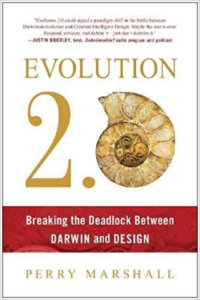
Materialism and the mechanistic world-view – the idea that the everything is a machine operating in terms of mindless, mechanical forces – has severe nihilistic implications. An alternative to this view is that the universe is alive, and that consciousness permeates it – a view called ‘panpsychism.” When his wife began to think that panpsychism might be true, Sam Harris, a famous anti-religion atheist. initially told her to remain silent about her views in case she lost all street cred. When she asked scientists she knew their own views, it turned out that many of them were also secret believers in panpsychism.
The fact that Annaka Harris and the scientists thought it necessary to lie by omission is troubling. It shows that science, as a human activity, can suffer from the usual human tendencies, one of which is the desire to belong to a group and to reach for social status. Groups define themselves by who they exclude as much as their positive beliefs, and they reward with the maintenance or increase of status and punish by demotion those who dissent. Hence, the creation of orthodoxies.
Another oft-commented upon human tendency is the desire to have something to worship. If religion is abandoned, a religious attitude will usually simply be taken towards something non-religious. Communism was atheistic so the Russians simply worshipped Stalin instead, and the Chinese turned Mao Zedong into a demi-God in their imaginations. I have met an engineer with such reverence for science and his own status as a scientist that he is tremendously conceited about his ability to think about philosophical, or any other, topics beyond the scope of his expertise. He definitely seems to see himself as a priest of science – an idea that Francis Bacon, credited with contributing to “the scientific method” actually championed, including the idea that scientists should wear special robes to distinguish themselves from hoi polloi.
There has been a kind of religious or cultural war between atheist scientists and creationists, and education concerning evolutionary biology has suffered as a result. Some of the scientists are every bit as religiously motivated in their own way as the creationists. Famous public proselytizers of Neo-Darwinian evolutionary biology have ignored or downplayed discoveries in science that contradict a mindless, mechanistic view of organismic reality. So, what is presented for public consumption is distorted in the interests of continuing the culture war.
Perry Marshall’s book Evolution 2.0 was written with the aim of bringing the general reader up-to-date with the latest discoveries in biology. He identifies five drivers of evolutionary change and speciation that scientists have uncovered. In the process, Marshall reveals the substantial gap between what practicing scientists mostly believe and accept, and what the public is told about the drivers of evolution.
Tertullian is reputed to have said, “I believe because it is absurd,” referring to his religious belief. Some fundamentalist Christians have adopted a similar attitude, and see believing in absurdities, such as the idea that the Earth is 4000 years old, as a test of their faith. The equivalent of this absurd belief and test of faith, is the Neo-Darwinian assertion that evolution and speciation is driven by random mutation and natural selection.
The random mutation thesis is provokingly implausible. Like Tertullian and the Young Earth Creationists, people are asked to believe something that simply makes no sense. For instance, to go from the bent over stance of our monkey-like ancestors, to the bipedal, upright stance of a homo sapien takes thousands of coordinated physiological alterations that all have to work in concert and which only make sense if the aim is bipedal locomotion. Such an idea bears comparison to waiting for monkeys to type word for word, with the correct punctuation, Shakespeare’s Hamlet. Finding an alternative should come as an emotional relief to those straining to maintain their suspension of disbelief. Imagine the joy of getting to believe in evolution without having to embrace absurdities!
Perry Marshall had been raised a Young Earth creationist who converted to a belief in evolution. However, his training in electrical engineering contradicted the random mutation thesis. Engineers distinguish between “noise” and “signal.” When someone talks on a staticky phone line, the voice is “signal;” the static, random “noise.” Random changes in a complex system produce deleterious effects not useful, novel innovations. “Noise destroys.”
If one thousand computers were to be left in a room and could somehow continue to function unsupervised for any amount of time – perhaps millions of years – no new useful programs will randomly appear on any of those computers as the result of errors in the functioning of the computers. If something like PowerPoint is not installed on the computers, nothing like PowerPoint will have spontaneously appeared after a millennia. Simply extending the amount of time involved does not help.
It should be noted that there can be room for intelligently, intentionally introduced elements of randomness in some contexts. One example is flipping a coin in a decision-making impasse. Another has to do with unnerving silences during long-distance telephone conversations caused by digitally sending words as packages. Absolute silence suggests that the interlocutors have been cut off so static is reintroduced into the signal path. This is not the same as truly random occurrences.[1]
If random changes could be productive then a computer programmer, for instance, could produce novel programs by introducing random lines of code. When Marshall mentioned this possibility to computer programmers they just looked at him as though he were crazy. Or scratches on a CD would produce new and possibly better music – and so on.
Most scientific innovation does involve trial and error. This will include some random-like elements and unexpected results. However, the process has a guiding intelligence behind it and useful innovations must be noticed by the scientist and retained. The scientist is not just manipulating any old garbage, closing his eyes and hoping something happens.
There have been sixty years of experiments involving prolonged exposure of Drosophila (fruit flies) to X-rays. Theodosius Dobzhansky had conducted them for thirty. These organisms reproduce very quickly, gestating in two weeks – so those thirty years represent six hundred years of evolution. Richard Goldschmidt, who integrated development, genetics and evolution conducted similar experiments on moths. Some mutant fruit flies grew legs where their antennae should be, and some fruit fly mutated populations did reproduce faster, but no new organs or adaptive systems were generated and no new species were created in decades of work.
Mutations generated by radiation never produce major improvements. Instead, there arises the deterioration and the disappearance of some organs. Mutants which equal the normal fly in vigor are a minority, and mutants that would make a major improvement of the normal organization in the normal environments are unknown.[2] The higher the radiation level, the greater the incidence of lethal mutations, though this does not rule out other types of mutation contributing to evolution.
Dobzhansky’s student Francisco Ayala, using modest levels of radiation exposure, did manage to generate radiation-resistant fruit flies.[3] This involved self-adjustments by the fruit flies’ own cellular machinery, just as David Stadler and Richard Moyer found that modest radiation applied to fungus could get the organism’s gene repair mechanism to kick in.[4]
When Ayala “warned” the organism with low-dose radiation before the main experiment, the organism would brace itself by switching on its repair systems. When Evelyn Witkin stimulated mutations in bacteria with ultraviolet light she got mutant-resistant bacteria, instead of mutant bacteria. Marshall comments that he has “never found a radiation mutation experiment that definitively produced a useful new feature that was not already there.”[5]
The idea that a cell is the product of chance has been compared to a tornado passing through a junkyard and assembling a fully functioning 747 airplane complete with computer systems and miles of wiring.
Many scientists in public forums seem to like to claim that the existence of life used to be thought of as a mystery, for instance, embodying an elan vital, but that it is no longer.[6] The notion that the problem of the origins of life has been solved or that profound intelligence exhibited even by individual cells is not still puzzling is simply incorrect. One wonders if the scientists are consciously lying or just ignorant.
Five Non-Random Ways Organisms Evolve
Five different processes have been identified in which evolution takes place in real time, not over millions of years, and they do not involve natural selection. And they certainly have little to do with random mutations.
These processes are:
- Transposition,
- Epigenetics,
- Horizontal gene transfer,
- Symbiogenesis and
- Hybridization, also known as Genome Duplication.
These processes tend to be the result of stress, meaning the organism is fighting for its life, and are in many cases the cell intelligently adapting to changes in its environment such as the presence of poisons and attacks from the immune system.
DNA does not determine cell structure and morphology in a one-way bottom up causal process. Cells will modify their DNA in response to the environment in a top down manner.[7]
Transposition
Transposition is a process where a cell edits its DNA in real time in response to threats. If a bacteria is being killed by antibiotics it will snip bits of its own DNA and move them around in order to acquire new functions. This process is not random. It is intelligent and involves educated guesses about what morphological or functional changes that might help the organism fight off the challenge.
Barbara McClintock did experiments with maize in the 1940s where she would intentionally damage the plant’s chromosomes with radiation. By breaking the chromosome, the cell’s editing systems were triggered and the cells would reconstruct the chromosome with other sections of radiation-damaged genetic material. In some cases plants were forced to join broken chromosomes together to reproduce. Due to these alterations each generation created new instabilities. If the plant could not recover the original information it would activate previously latent parts of the maize genome – patching the DNA with a new genetic element.[8] Cells cut and splice their DNA in precise locations and patterns, not randomly. The plants passed these activated transposable elements to their offspring.[9]
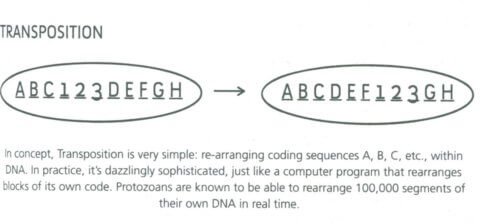
By editing its own genome, cells develop new features that are not the result of random mutations and natural selection. There is variation and adaptation before natural selection can occur. Nearly all bacteria, plant, and animal cells can cut, copy and paste their own genetic information.
Starving protozoans, male and female, mate by fusing together then completely restructure the resulting genome, cutting DNA into 100,000 pieces and rearranging the code. Thousands of simultaneous edits occur in response to heat, shock, pollution, hazardous chemicals, absence of food, presence of food they cannot digest, all in a few hours.
The field of biosemiotics analyze these edits via linguistic analysis. Only certain segments are cut and spliced and only certain arrangements are allowed.
James Shapiro confirmed that bacteria can also transpose elements of DNA in 1968 and McClintock got the Nobel Prize in 1983.[10] Yet transposition is omitted from entry-level biology classes and popular evolution books neglect it. This is evidence of a marked difference between evolution as practiced by biologists and what is fed to the general public.
Epigenetics
Epigenetics is a process where parts of the genome are “greyed out” meaning rendered non-functional in order to change the characteristics of the organism. These changes are then passed down to its offspring. The same sequences of letters are in place, but which letters are visible changes the “sentences.”
Only 10-20% of genes are switched on in any given cell. Genes for eye color are only switched on in the eyes, not in the tongue or liver. If there is too little sugar in the bloodstream, cells respond by changing their code expressions. Rather than removing code that might be useful later, epigenetics is a temporary shutdown of activation in response to external stimuli.
Nature is conservative. It never knows when the old code might be useful again. This might explain why whales have small feet where their legs once were hidden within their torsos.
Rat pups licked by their mothers had a reduction in a specific kind of gene in their hypothalamus enabling them to handle stress better. Thus a physical action of the mother changed the code expression in a specific organ without changing its DNA.[11]
Epigenetic changes were noticed when pregnant mothers who suffered starvation during the Dutch famine of 1944 gave birth to smaller children, who also later had smaller children, who had a tendency to put on weight. Unfortunately, since the starvation was caused by the shortages related to WWII, when the war ended and something like the normal food supply was restored, these children were in increased danger of heart disease, obesity and cardiovascular disease.
Epigenetics explains why identical twins can have different allergies, intelligence and inherited diseases.
This fits Jean-Baptiste Lamarck’s early nineteenth-century idea that parents can acquire new characteristics as the result of their environmental experiences that can get passed down to their offspring; something Neo-Darwinism once ruled out.
Horizontal Gene Transfer
Horizontal gene transfer occurs between almost any kind of cell, living or dead. For example, from a bacterium, to a chinchilla (a kind of rodent), to a virus, to a fern plant, to another bacterium and then to another animal. Characteristics that are useful for survival are transferred between organisms in real time.
For instance, in a situation where bacteria are under attack bacteria without a defense will approach other cells, sometimes another kind of cell, alive or dead, with immunity. For instance, it locates a pump that can purge the poison from a cell. The bacterium finds the portion of the DNA that codes for the pump and inserts the code into its own DNA and starts multiplying.[12]
It extends a pilus (a hair-like appendage) into the immune cell, and takes a single strand of the antibiotic resistant plasmid needed for immunity. After the plasmid strand is established in the recipient cell, a complementary strand is synthesized. In this way, new genetic material spreads within an existing population of bacteria in thirty minutes. The bacteria that do not adapt die.
Again, this is evolutionary, purpose-driven change in minutes, not millions of years.
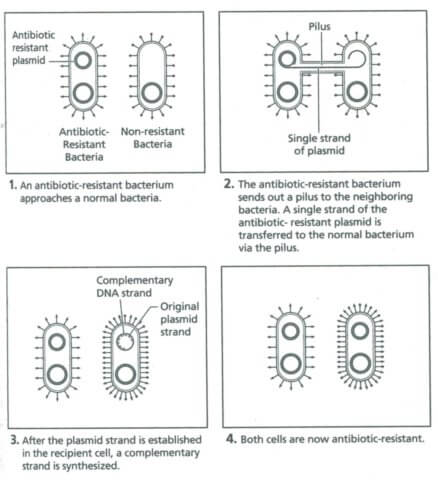
Marshall points out that it is amazing that each cell can function with this amount of novel DNA. It would not be possible to toss large amounts of computer program into another program and still have the computer function – and certainly not better.
The immune system fights back by obtaining new pieces of DNA to defeat the mutated bacteria. It is constantly searching for the code it needs to fight invaders, and discarding old code that is not needed anymore. The immune system makes predictions about what DNA and antibodies will be successful.
Every one of our cells can edit itself in this way and then transposition refines the results.
Genes are never transferred alone. They are transferred in three part unit-constructs called “expression cassettes;” a promotor, the gene, and a terminator. Computer files do the same thing:
1) Header: Hello, I’ve got something to say. (Header)
2) Message. (Data)
3) End of message. (Footer)
All organisms can share information with each other and all speak the same language.[13]
Mycobacterium smegmatis, related to TB, but harmless to humans, endows each recipient cell in the course of reproduction with a different combination of DNA. And it can generate millions of hybrid bacteria overnight, each one different, with up to 25% of the recipient genome being new donated DNA. Thus, there can be a lot of genetic diversity without sexual reproduction.[14]
If someone were unaware of horizontal gene transfer, one would be likely to imagine a far less teleological and intelligent process whereby vulnerable cells just died, immune cells reproduced and natural selection would leave the immune cells remaining. This is not what actually happens.
Symbiogenesis
Symbiogenesis is a process whereby two different organisms combine creating a new organism. This can occur over a very short period of time. One famous example is lichen. Lichen can grow on rocks in very harsh environments. Lichen is a combination of fungus and algae. The fungus and algae would die in that environment on their own. Instead, they combine in a way that provides nutrients and protection for both.[15]
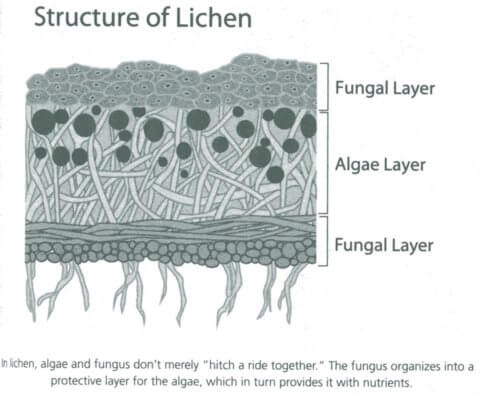
There are two other very significant instances of symbiogenesis without which life on the planet would be very different indeed. All plant cells contain blue-green algae originally from the sea. This algae, turned into chloroplasts, is what give plant cells their green color and it enables them to gather energy from the sun via photosynthesis. These chloroplasts have their own DNA which is different from the rest of the plant cell, which is why we know that they originally evolved separately from land plants.[16]
Likewise, animal cells are the product of symbiogenesis. Mitochondria, producing energy for animal cells, were once separate organisms. Again, we know this because mitochondria have their own DNA which differs from the rest of the cell.[17]
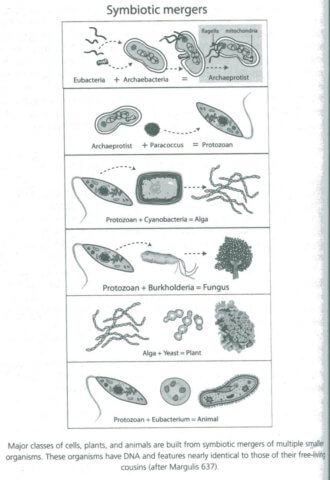
Symbiogenesis has been achieved in the laboratory, by Eugen Thomas in 1939 when he synthesized lichen from fungus and algae, and by Dr. Kwang Jeon who learned how to reliably trigger cell mergers between bacteria and amoeba. The experiment involved thousands of bacteria taking up residence in an Amoeba proteus, thanks to Dr. Jeon’s intervention. A parasitic attack killed almost all of the amoeba. But within a year the two species had entered into symbiosis – each modifying the expression of their genes to support the mutual interdependence. When the scientist separated them out again after the merger, both organisms died. They had become mutually interdependent on each other.
Hybridization (Genome Duplication)
Finally, hybridization occurs when two different species breed and produce offspring. This usually occurs only under stress, when there are too few suitable breeding partners of the same species in an environment.
Most hybrids are infertile. However, occasionally the hybrids are able to reproduce. A notable instance is when two jawless vertebrates mated, producing a jawed fish.[18]
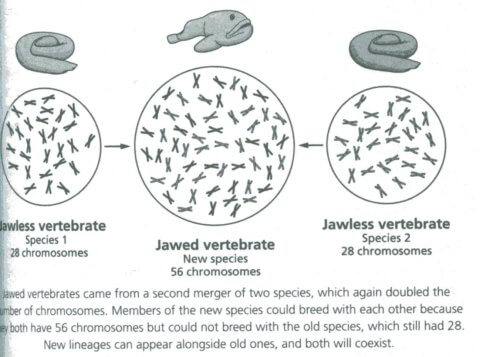
Hybrids contain double the number of chromosomes of their parents. Having all this extra genetic material means that the new organism has a remarkable genetic library to tap for things like transposition or epigenetics. After a merger, “hybrid dysgenesis” occurs where the cell rearranges its DNA and discards sequences it does not need.[19]
DNA is more like a typewriter to write things with than the master code determining everything else.
Hybridization would explain why there is an absence of intermediate changes in the fossil record. Rather than gradualism, the fossil record indicates the sudden emergence of new species and its sudden disappearance; what Stephen Jay Gould called “punctuated equilibrium.”[20]
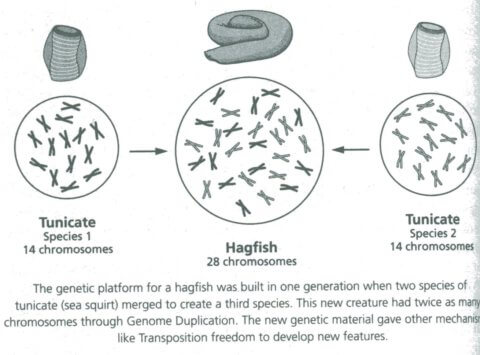
In the plant world, bread wheat is a combination of emmer wheat and goat grass, a noxious weed. Water melons have three genomes and wheat has six genomes.
Conclusion
Evolution 2.0 notes the cell’s capacity to adapt and to generate new features and new species by engineering its own genetics in real time. Thus, intelligence and purpose can be found right down at the cellular level and in plants. Plants have blue/green receptors so they know what color shirt a person is wearing or if someone is standing nearby. When lima bean plants are being eaten by beetles the leaves release chemicals and the flowers produce nectar attracting beetle-eating arthropods. When bacteria are getting ready to attack a person they wait until there are sufficient numbers before launching a simultaneous assault on the immune system. Bioluminescent bacteria all light up at once. Termites intelligently change the shape of their termite mound depending on changes in the weather and climate. Trees note the changes in the length of days and the seasons and use this information to judge when to bloom, when leaves should change, and when to go dormant for the winter.
Philosophers have noted that with the scientific revolution, starting roughly in the sixteenth century, came the mechanistic worldview – thinking of all reality in terms of the metaphor of the machine. Prior to that time scientists had used clockwork machines to model, for instance, the workings of the solar system, without thinking that the universe was actually a machine.
The mechanistic worldview, and its associated materialism, was an innovation that has proved quite scientifically fruitful. However, as many philosophers have noted, there was a high price to be paid for this machine metaphor, namely that purpose, teleology, souls, interiority, and intelligence were banished from the picture of reality. And with those things go morality and meaning. Collections of atoms and molecules have no moral status per se. And if deterministic forces govern all events, all events being the effects of prior physical causes, with the events becoming themselves causes of new events, then agency disappears. Agents are centers of intelligent and purpose-driven decision-making. If determinism were true, then all events would be the result of prior events in mechanistic procession with no centers of anything.
However, machines always have a purpose and they always have a designer. Thus, many scientists from past centuries were Deists – Deists being those who believe that God created the universe, set it in motion by creating the laws of physics among other things, and then left the clockwork universe to run itself, removing Himself from the picture – a kind of compromise between science and religion.
The religious implications of the machine-metaphor have haunted science ever since and scientists have tended to try to counteract them by attempting to eliminate purpose from their analyses and focusing on mechanism. An alternative would be to abandon the machine-metaphor and replace it with an organismic view of things. No designer or exterior purpose would then be needed, perhaps. Cells, plants and animals could have their own purposes and desires – intelligence would then infuse the universe with purposeful change and adaptation. This would tally well with the evidence and there would no longer be any need to deny interior motivations.
Darwin failed to account for the origin of species and added nothing new to the topic. Hybridization was the only method he mentioned and it was known about long before Darwin.
Darwin proposed that species gradually came into existence as the result of natural selection – by analogy with dog breeding and the selective breeding of plants.
However, dog breeding is not a good model for the origin of species because new species are not created in this manner and though great differences can be achieved, there are severe limitations. A dog the size of an ant or an elephant is not possible and no new species of dog have been created. These variations can be described as “micro-evolution,” like the varying size and shape of finches’ beaks, rather than macroevolution – the actual development of new species.
Darwin acknowledged that the lack of intermediate stages in the fossil record was the gravest objection to his theory; now we can identify five active, intelligent, non-gradual mechanisms.
- Transposition – cells rearranging their DNA,
- Horizontal Gene Transfer – cells exchanging DNA,
- Epigenetics – organisms passing acquired characteristics on to their offspring through cells switching DNA sequences on and off,
- Symbiogenesis – organisms merging together,
- Gene duplication/hybridization – two species merging to create a third.
Despite using his name, Neo-Darwinists have had to make major modifications to his theory by introducing the notion of speciation resulting from the random mutation of genes via copying errors.
There is nothing random about DNA. Marshall points out that DNA is literally, not figuratively, a code.[21] The definition of a code is information, which is then encoded, then transmitted, received, decoded, and sent as a message signal to its destination. DNA is a formal communication system because it encodes and decodes messages using a system of symbols. Information theory includes “information, transcriptions, translation, code, redundancy, synonymous, messenger, editing and proofreading” and all these things apply to biology literally.[22] The field of biosemiotics has arisen as a result.
Since DNA embodies meaningful information it is currently a complete mystery where this information came from. Marshall has set up a ten million dollar prize for anyone who can demonstrate a naturally occurring encoding/decoding system. The system cannot be preprogrammed with any kind of code. This prize has judges that include the top physiologist at Oxford University, Denis Noble, the first person to make a computer model of a human organ, the heart, and whose discoveries made the pacemaker possible, and the top geneticist at Harvard, George Church. The discoverer will be assisted with a legal team to patent his discovery and share in all resulting profits.

Biology has always posed a problem for the mechanistic approach to science and biologists have always continued to think in terms of purposes – hearts are for pumping blood, eyes for seeing, immune systems for maintaining the health of the organism, etc.
A single-cell produces a wider variety of items than all of human manufacturing – at least up until very recently. All the parts must work together in an incredibly tiny space far beyond the capacities of human engineering. When the cell divides and copies its DNA the process goes through multiple layers of error correction until errors are reduced to almost zero – in a very similar way to computer systems, and cellphone operation. There is error correction built into the communication between your cell phone and the cell tower. This is all teleological, not random.
Now that most practicing biologists have abandoned random mutation as the driver of evolutionary change, it is time to educate the public. Since we ourselves are conscious and intelligent, responding to our environments, seeing that intelligence extends down to the cellular level can be uplifting. It means we are surrounded by beings somewhat like ourselves rather than being caught in some mindless machine stripped of purposes.
Notes
[1] Mutation breeding involves exposing plants to radiation and chemicals with the hope of producing mutations useful to humans. However, no new species have been developed using this method, and no new organs resulted. https://www.nytimes.com/2007/08/28/science/28crop.html
[2] P. 119, Dobzhansky, T. G. (1955) Evolution, Genetics and Man, NY, Wiley.
[3] 1969, Evolution of Fitness v Rate of Evolution of Irradiated Populations of Drosophila, Proceedings of the National Academy of Sciences of the USA, 63, 790-793.
[4] Induced Repair of Genetic Damage in Neurospora, Genetics, 98, 763-774, 1981.
[5] P. 33.
[6] Sam Harris and his podcast guest, for instance, agreed about this on “Making Sense with Sam Harris.” Jeff Hawkins, a brain scientist, made this claim in the podcast “Artificial Intelligence.”
[7] This phenomenon directly contradicts the anthropomorphic notion of the “selfish gene;” the notion that all life is driven by the gene’s desire to reproduce itself, promoted by Richard Dawkins in the book of the same name.
[8] Pp. 81-82, Evolution 2.0, by Perry Marshall.
[9] P. 87.
[10] P. 85.
[11] P. 116.
[12] P. 95.
[13] Pp. 100-101.
[14] P. 97.
[15] P. 123.
[16] https://www.huffpost.com/entry/cell-mergers-evolution-life_b_1807742
[17] P. 126.
[18] P. 139.
[19] P. 135.
[20] P. 138.
[21] A DVD is part of a code. Information is encoded as zeroes and ones on a DVD, a DVD player then decodes the information, which in conjunction with a TV/monitor results in a movie or TV show.
[22] P. 342.




